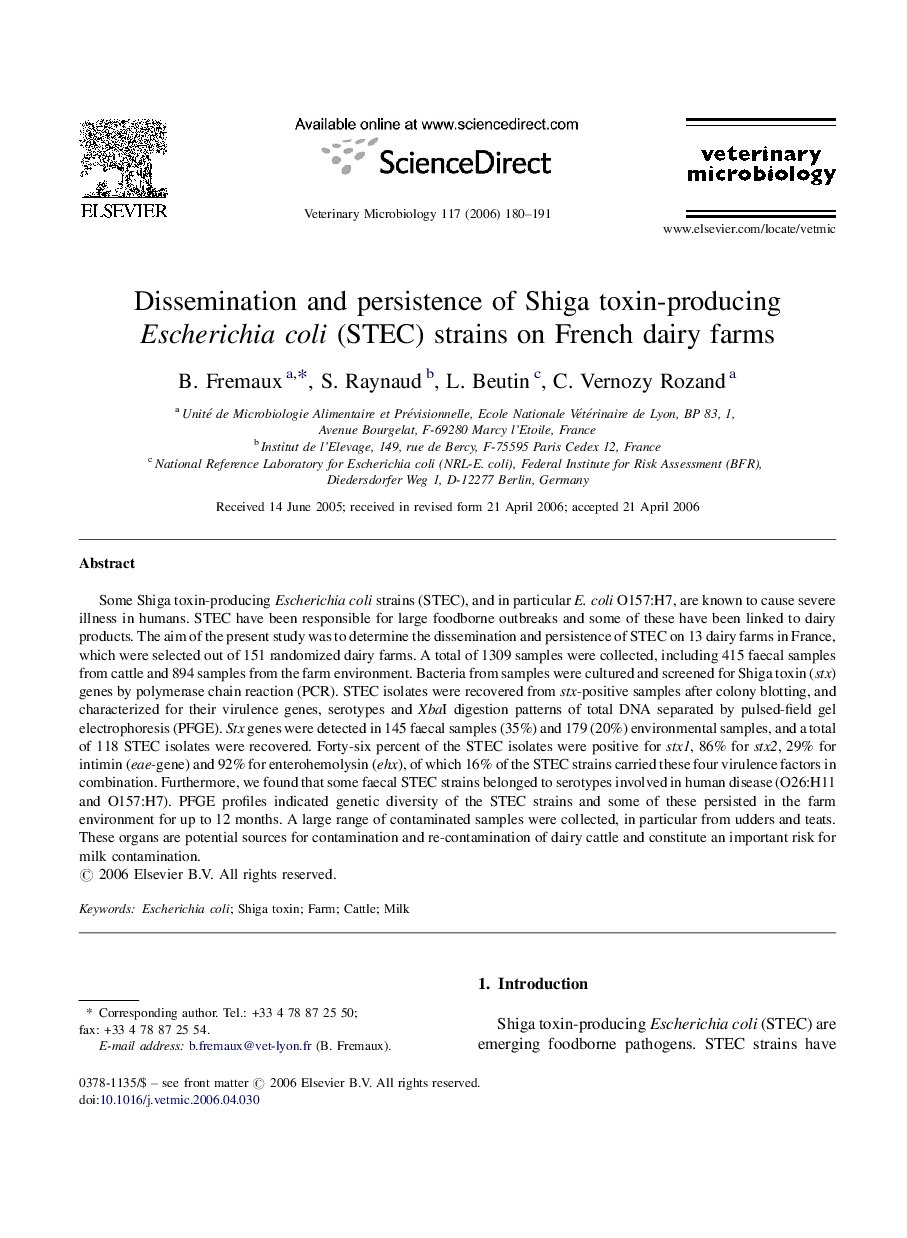| کد مقاله | کد نشریه | سال انتشار | مقاله انگلیسی | نسخه تمام متن |
|---|---|---|---|---|
| 2469640 | 1555460 | 2006 | 12 صفحه PDF | دانلود رایگان |

Some Shiga toxin-producing Escherichia coli strains (STEC), and in particular E. coli O157:H7, are known to cause severe illness in humans. STEC have been responsible for large foodborne outbreaks and some of these have been linked to dairy products. The aim of the present study was to determine the dissemination and persistence of STEC on 13 dairy farms in France, which were selected out of 151 randomized dairy farms. A total of 1309 samples were collected, including 415 faecal samples from cattle and 894 samples from the farm environment. Bacteria from samples were cultured and screened for Shiga toxin (stx) genes by polymerase chain reaction (PCR). STEC isolates were recovered from stx-positive samples after colony blotting, and characterized for their virulence genes, serotypes and XbaI digestion patterns of total DNA separated by pulsed-field gel electrophoresis (PFGE). Stx genes were detected in 145 faecal samples (35%) and 179 (20%) environmental samples, and a total of 118 STEC isolates were recovered. Forty-six percent of the STEC isolates were positive for stx1, 86% for stx2, 29% for intimin (eae-gene) and 92% for enterohemolysin (ehx), of which 16% of the STEC strains carried these four virulence factors in combination. Furthermore, we found that some faecal STEC strains belonged to serotypes involved in human disease (O26:H11 and O157:H7). PFGE profiles indicated genetic diversity of the STEC strains and some of these persisted in the farm environment for up to 12 months. A large range of contaminated samples were collected, in particular from udders and teats. These organs are potential sources for contamination and re-contamination of dairy cattle and constitute an important risk for milk contamination.
Journal: Veterinary Microbiology - Volume 117, Issues 2–4, 31 October 2006, Pages 180–191